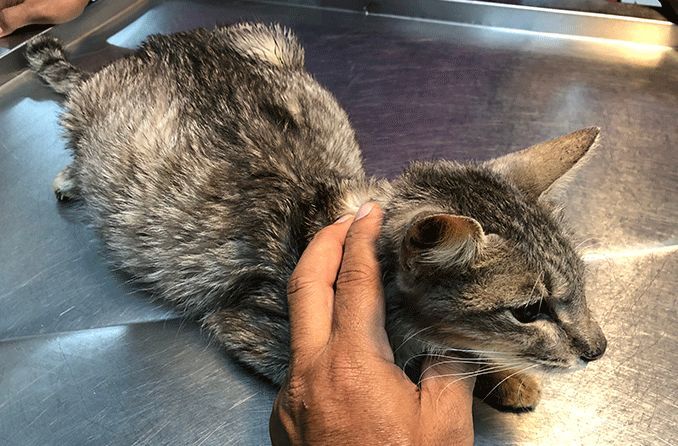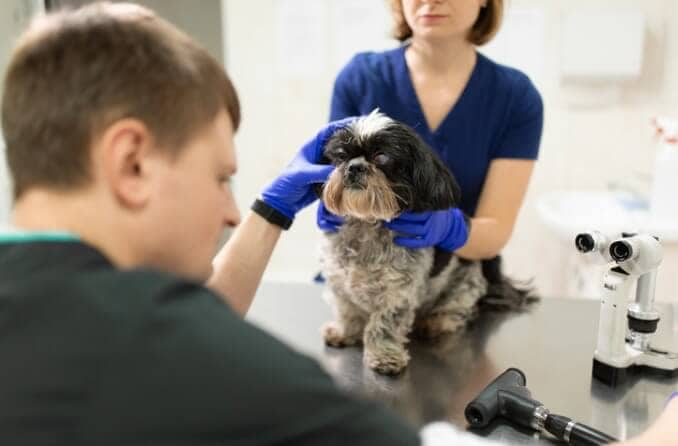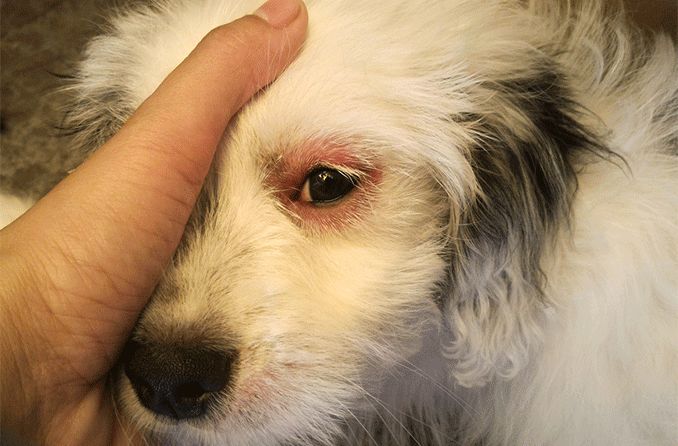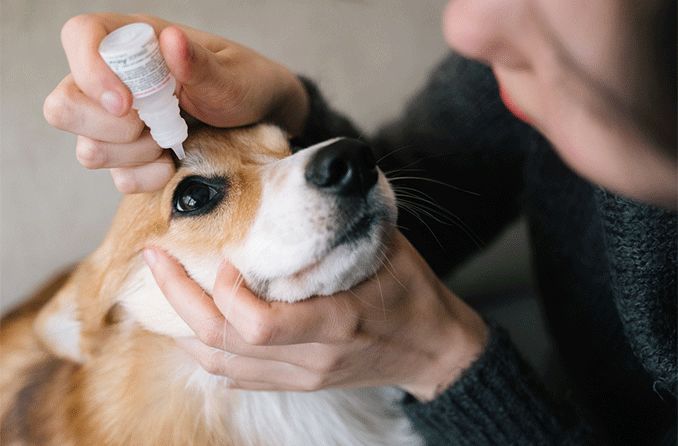What is pigmentary keratitis in dogs?
Pigmentary keratitis is a condition in which black or brown pigment is deposited on the cornea of a dog’s eye. It’s usually caused by chronic inflammation or diseases of the eyelid. Dark pigment may also appear after a corneal ulcer heals. Pigmentary keratitis also causes blindness in some breeds.
Causes of pigmentary keratitis in dogs
Chronic eye irritation and inflammation are the primary causes of pigmentary keratitis. Conditions that can result in eye inflammation or irritation include:
- Ectropion –The lower eyelid turns outward and leaves the cornea exposed.
- Entropion –The eyelid rolls inward and the eyelashes scratch the cornea.
- Trichiasis –When the eyelashes grow inward and rub against the eye.
- Dry eye – When a dog’s eyes don’t produce enough tears (also known as keratoconjunctivitis sicca or KCS).
- Eyelid tumors – A mass on the eyelid (both benign and malignant) that can cause inflammation of the cornea.
Pigmentary keratitis may also be inherited, and the underlying cause for the condition is not found in all cases.
Symptoms
A black spot, brown pigment or a black film on your dog’s cornea are all symptoms of pigmentary keratitis. Other symptoms may include:
- Redness
- Increased thick, ropey discharge from the eye
- Cloudy appearance of the eye
- Pain
- Excessive tearing
- Eye enlargement
The pigmentation usually appears at the inside corner of the eye and expands to cover the central part of the cornea and the pupil. If most of the eye is covered by the pigmentation, light can’t enter the eye, and your dog may have trouble seeing.
Many dog owners don’t know about pigmentary keratitis. If your dog has any of these symptoms, take them to your vet as soon as possible.
Are certain breeds more at risk?
Pigmentary keratitis is most common in short-faced or flat-faced dogs, also known as brachycephalic dogs. These dogs often suffer from uncontrolled or severe cases of dry eye, which is one of the main causes of pigmentary keratitis.
Breeds commonly affected are:
- Pug
- Boxer
- Bulldog
- French Bulldog
- Boston Terrier
- Shih Tzu
- Pekingese
Pigmentary keratitis often leads to blindness in the Pug, Shih Tzu and Pekingese breeds.
Treatment
There isn’t any treatment for pigmentary keratitis. Instead, your vet will try to identify the underlying cause of the condition in order to heal the cornea and save your dog’s vision. When treated correctly, your dog’s eyes feel better, and their vision can improve.
Treatment options include:
Surgery — Surgery is often needed to repair eyelid abnormalities such as entropion, ectropion, eyelash abnormalities or eyelid tumors and to help the eyelid function better. During surgery, your vet will restore the eyelid to its normal shape to prevent more damage to the cornea. Surgery is not used to remove the pigment on the dog’s eye, however. Pigmentary keratitis usually recurs, so surgery is not a permanent fix.
Medication — Dogs who have dry eye that is causing pigmentary keratitis may be prescribed medicine such as a corticosteroid ointment or artificial tears to increase the production of tears. This will lubricate the eye and stop the progression of the condition.
Unfortunately, the deposits on your dog’s eye from pigmentary keratitis are permanent in most cases. The brown or black spots on the cornea may get lighter, but they won’t fully disappear. However, if the cause of the inflammation is found and treated, this may stop pigmentary keratitis from progressing and from happening again.
SEE RELATED: What eye drops are used for dogs?










